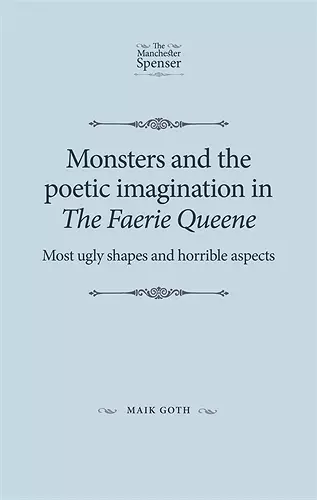Monsters and the Poetic Imagination in the Faerie Queene
'Most Ugly Shapes, and Horrible Aspects'
Format:Hardback
Publisher:Manchester University Press
Published:1st Jul '15
Currently unavailable, and unfortunately no date known when it will be back

Edmund Spenser’s The Faerie Queene (1590; 1596) is an epic romance teeming with dragons, fantastic animals, giants, grotesque human-animal composites, monstrous humans and other creatures. This monograph is the first ever book-length account of Spenser's monsters and their relation to the poetic imagination in the Renaissance. It provides readers with an extended discussion of the role monstrous beings play in Spenser's epic romance, and how they are related to the Renaissance notions of the imagination and poetic creation.
This book first offers a taxonomic inventory of the monstrous beings in The Faerie Queene, which analyses them along systematic and anatomical parameters. It then reads monsters and monstrous beings as signs interacting with the early modern discourse on the autonomous poet, who creates a secondary nature through the use of his transformative imagination and fashions monsters as ciphers that need to be interpreted by the reader.
'A great strength of Goth's study is its multiple appeal. This weighty contribution to literary studies will interest historians of fantasy, horror and the grotesque, of disability and of teratology, as well as specialists in Spenser, the literary debates of his time, or monsters in fiction. Supporting his text with a wealth of notes, identifying many unexpected contributions and references as well as most of the usual suspects, Goth reliably signposts the complex range of English and European monster traditions, myths and texts, raided, paraded, and upgraded by Spenser for his monsters.'
M A Katritzky, The Open University, The Spenser Review, May 2016
‘Goth's significant inquiry on monsters in Spenser's Faerie Queene sheds new light on the
representation of monstrosity in the Renaissance.’
Daniela Carpi, Anglistik – International Journal of English Studies 27.2 September 2016
‘My wanting more is ultimately a sign of the book’s virtues: it is at once learned and engaging. In looking away from the allegorical heroes to consider its varied monsters, it offers a rich new perspective.’
Kenneth Hodges, University of Oklahoma
ISBN: 9780719095719
Dimensions: unknown
Weight: unknown
376 pages